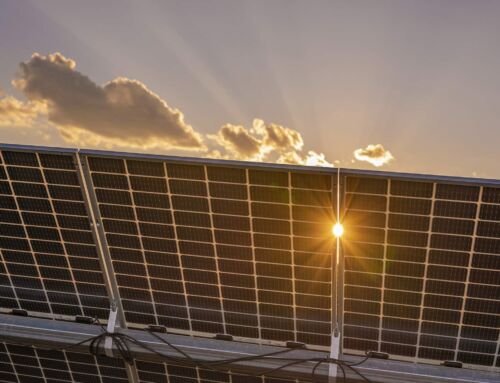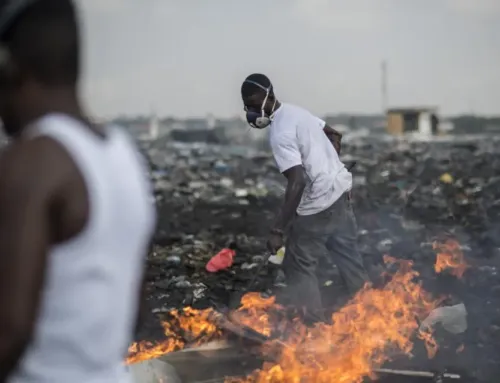Australia faces a looming crisis managing end-of-life (EOL) solar panels. As of 1 August 2023, Australia only recycles 17% of solar panel components, specifically the aluminium frame and junction box. The “remaining 83% of a solar panel’s materials (including glass, silicon and polymer back sheeting) are not currently recyclable in Australia”, and treated as waste.
The University of New South Wales recently partnered with the Australian Centre for Advanced Photovoltaics to undertake a scoping study on the EOL management of Australian solar panels (Scoping Study). The industry standard lifespan for most solar panels is 25 – 30 years, and the oldest solar panels in Australia are starting to reach EOL. The Scoping Study sets out the weight and value composition of materials in a typical solar panel (extracted below), which highlights the potential of recovering critical minerals from EOL solar panels.
Researchers found on average 95% of materials from a typical 20kg solar panel can be recovered (which amounts to a value of $22.6 per solar panel). The total material value from all EOL solar panels is projected to surpass $1 billion by 2033. Reducing waste from EOL solar panels is an opportunity to not only capture economic value, but also significant social and environmental value in a market with a growing emphasis on ESG.
Australia’s Solar Uptake and Waste Projections
According to the Rooftop Solar and Storage H2 2023 Report, rooftop solar is the largest source of renewable energy generation in Australia and uptake of solar is continuing to grow. More than 3 million Australian households currently have solar panels installed on their roofs. This is not surprising given NSW broke the record for the “highest annual installed capacity of any state”, and QLD was the “first state to surpass a total of one million rooftop solar installations in 2023.”
The Scoping Study projects solar panel waste will reach 100,000 tonnes annually by 2030 in Australia based on historical PV installation data as of 30 April 2022. The graph below depicts the projected solar panel waste from small-scale (blue) and large-scale (yellow) solar projects over the next 12 years. As predicted, the trend shows the initial solar panel waste will come from residential solar, and shift to large scale solar by 2030 (as panels from large scale solar farms reach EOL).
Barriers to Solar Panel Recycling
The increase in feedstock should assist recycling operators achieve economies of scale in their operations and be profitable. The current primary barrier for recycling solar panels in Australia has been the cost, which is approximately $28 per panel. This is roughly six times the cost of sending EOL solar panels to landfills, which is estimated to cost $4.50 per panel.
However, the outlook for solar PV recycling is promising as economic factors and policy settings are beginning to align. Federal and State governments have opened a series of grant funding programmes and regulatory schemes to develop a sustainable recycling industry in Australia that achieves both commercial and environmental objectives.
Professor Penelope Crossley, an international legal scholar on the energy transition (University of Sydney), is an authority on the topic of solar panel recycling. She notes that there is currently no national scheme or program for the collection, recycling, or re-use of decommissioned PV systems in Australia. Professor Crossley views this as a market failure that “demands regulatory intervention to fundamentally reorient our regulatory framework governing energy technologies”.
She continues that “national solar recycling has been listed as a key environmental priority for the Australian Government for the past seven years. However, there is still no national legal framework to address the end of life of solar panels”.
The Future Outlook of Solar Recycling in Australia
While the Federal Government’s proposed product stewardship scheme for small electrical products and solar photovoltaic systems could aid in closing the regulatory gap,19 no announcements have been made after the closing of the consultation period on 23 July 2023.
An important proposed change includes the inclusion of solar panels in the statutory definition of ‘regulated e-waste’ which will allow solar panels to be managed according to more stringent environmental standards and recycling requirements. The Federal Government’s proposed product stewardship model intends to shift the cost of recycling from users and operators of solar panels to producers and importers. It also aims to ensure Australia meets “international obligations regarding waste” under the Basel Convention (ratified in Australia through the Hazardous Waste (Regulation of Exports and Imports) Act 1989).
States and territories have yet to follow suit, but there are ongoing discussions and consultations regarding e-waste management and recycling regulations at both state and federal levels. Victoria is currently the only state to have officially banned solar panel systems from landfills under the Environment Protection Act 1970 (VIC) since July 2019. South Australia and the Australian Capital Territory have imposed restrictions on disposing e-waste in landfills. Notably, Western Australia is implementing Phase 1 of the Waste Avoidance and Resource Recovery (e-waste) Regulations 2024 (WA) which came into force on 1 July 2024, and a landfill ban for solar panel waste is anticipated for future phases. The anticipated increase in feedstock from EOL residential solar panels and domestic policy supporting recycling will also coincide with the implementation of the Basel Convention’s e-waste amendment which will enter force on 1 January 2025. The amendment aims to regulate the movement of solar panel waste and prohibit their export. This, coupled with landfill bans at the state and territory level, will lead to an increase of recycling feedstock.
The Scoping Study found domestic EOL solar waste will be concentrated in major cities – Sydney, Brisbane, Melbourne, Perth, and Adelaide – over the next two to three years. Conveniently, this means 70 per cent of solar panel waste will be centralised near metro regions with supporting infrastructure. As depicted in the graph in Figure 1, this will provide a buffer period for recycling operators to enter the Australian market, streamline their operations, save on transport costs and prepare for future expansion into regional areas where solar panel waste is expected to increase from large scale solar farms in 2030.
Australia’s journey towards effective solar panel recycling is both a challenge and an opportunity. The incumbent Government’s commitment to building a solar manufacturing industry in Australia through initiatives like the Solar Sunshot program and Future Made in Australia agenda also provides recycling operators with confidence in the ongoing growth of the solar industry domestically.
With increasing volumes of EOL solar panels and the potential benefits of recycling, the alignment of policy and market forces paints an optimistic outlook in building a sustainable and efficient recycling infrastructure to support our energy transition.
Link to article: https://hamiltonlocke.com.au/australias-solar-panel-recycling-challenge-and-market-outlook/


